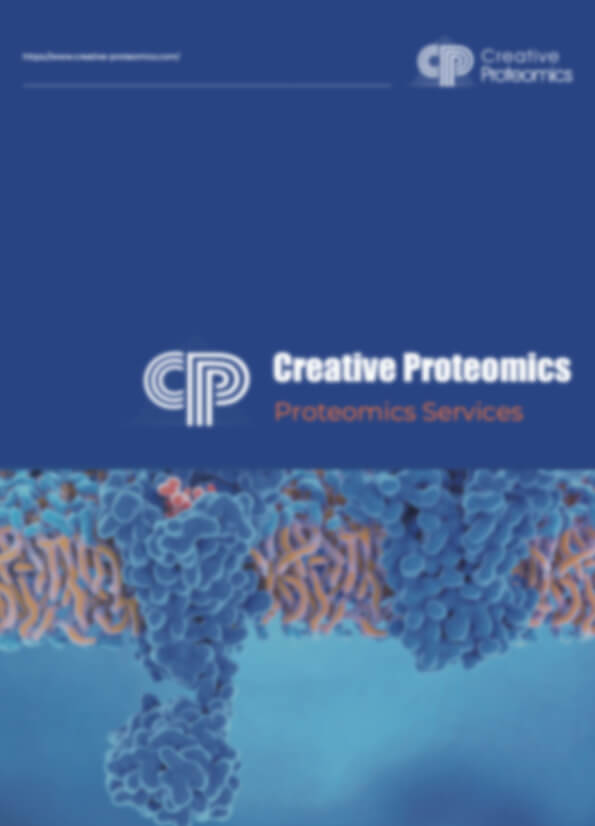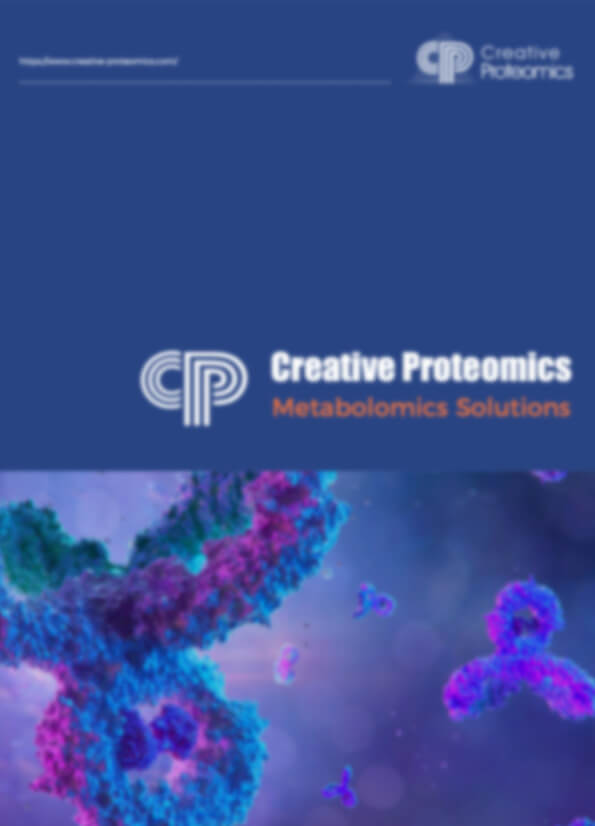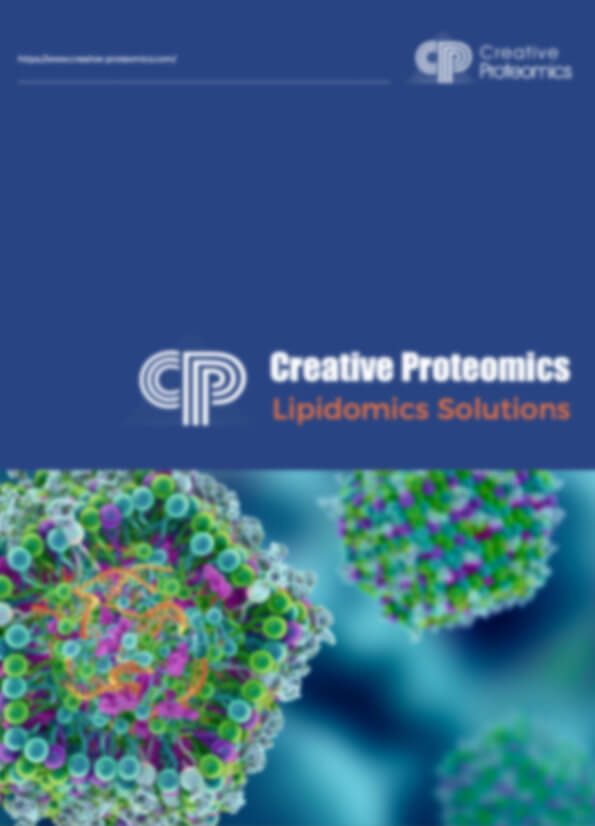- Service Details
- Demo
- FAQ
- Publications
The Thermo Scientific Q Exactive Hybrid Quadrupole-Orbitrap Mass Spectrometer is at the forefront of mass spectrometry innovation, seamlessly integrating the precision of quadrupole mass selection with the unparalleled resolution and accuracy of Orbitrap technology. Designed for researchers and professionals who demand superior analytical capabilities, the Q Exactive system delivers high-resolution, accurate-mass (HR/AM) measurements, making it an indispensable tool in complex analytical applications. Whether your focus is on drug discovery, proteomics, metabolomics, or environmental analysis, the Q Exactive is engineered to deliver results with exceptional clarity and reliability.
Features of Q Exactive Hybrid Quadrupole-Orbitrap Mass Spectrometer
- Unmatched Resolution: Achieve up to 140,000 resolution, allowing you to detect and differentiate even the most subtle molecular differences within complex matrices.
- High Sensitivity: The innovative S-Lens technology enhances ion transmission, boosting sensitivity and enabling the detection of low-abundance compounds.
- Rapid Polarity Switching: Fast scan-to-scan polarity switching in both MS and MS/MS modes enables the detection of a broader range of compounds in a single analytical run.
- Versatile API Source: The Ion Max ion source supports multiple atmospheric pressure ionization (API) modes, including ESI, APCI, and APPI, ensuring flexibility in sample introduction and ionization.
- Advanced Signal Processing: Spectrum multiplexing and cutting-edge signal processing ensure UHPLC-compatible data acquisition speeds, optimizing throughput without sacrificing data quality.
What We Can Offer?
Drug Discovery and Development
We offer cutting-edge support for drug discovery and development with our Q Exactive Hybrid Quadrupole-Orbitrap Mass Spectrometer. Our system provides high-resolution, accurate ption, distribution, metabolism, and excretion (ADME). This facilitates a streamlined development process and optimized drug efficacy.
Proteomics
In proteomics, we provide advanced capabilities with the Q Exactive for comprehensive protein analysis. Our system delivers high-resolution and efficient fragmentation, enabling detailed peptide and protein spectra generation for accurate identification and quantification. We can assist with analyzing post-translational modifications, such as phosphorylation and glycosylation, and integrate with specialized software for in-depth proteomic studies.
Metabolomics
For metabolomics research, we offer exceptional performance in metabolite analysis and biomarker discovery using the Q Exactive. Our system's high-resolution capabilities allow for detailed metabolic profiling, and its fast polarity switching supports simultaneous analysis of diverse metabolite classes. We can help you conduct large-scale metabolic studies with precision and efficiency.
Food Safety
In food safety analysis, we provide precise detection of contaminants, additives, and adulterants in food products. The Q Exactive's high sensitivity and resolution enable accurate identification and quantification of substances such as pesticide residues and food additives. We can support you in ensuring food safety and meeting regulatory compliance with reliable and detailed analytical data.
Environmental Analysis
For environmental analysis, we offer robust solutions for monitoring pollutants in water, soil, and air. Our Q Exactive system delivers high-resolution, accurate-mass detection to precisely identify and quantify contaminants like heavy metals and organic pollutants. We can assist with environmental monitoring and help you ensure compliance with regulatory standards, supporting effective pollution control and sustainability efforts.
Sample Requirements for Q Exactive Hybrid Quadrupole-Orbitrap Mass Spectrometry
| Sample Type | Recommended Volume | Preparation Notes |
|---|---|---|
| Biological Samples | 10-100 µL | Plasma, serum, urine, tissue homogenates, cell extracts. Ensure proper extraction and filtration. |
| Chemical Samples | 10-100 µL | Small molecules, drugs, metabolites. Dilute as needed to fall within the instrument's dynamic range. |
| Environmental Samples | 50-200 mL | Water, soil, air, sediment extracts. Perform thorough extraction and concentration if necessary. |
| Food Samples | 10-50 g (solid) or 10-100 µL (liquid) | Foodstuffs, beverages, food additives. Extract and dilute to avoid matrix effects. |
Preparation and Handling Guidelines
- Extraction: Employ suitable extraction techniques to isolate analytes efficiently. Ensure full recovery of target compounds.
- Filtration: Use appropriate filters (e.g., 0.22 µm) to remove particulates that may interfere with the analysis.
- Dilution: Adjust sample concentration to fit within the dynamic range of the Q Exactive. Avoid introducing contaminants.
- Concentration: Concentrate samples if analytes are at low concentrations, ensuring not to evaporate samples to dryness.
- Stability: Store samples under recommended conditions to prevent degradation and avoid multiple freeze-thaw cycles.
Technical Specifications
- Mass Range: Broad dynamic range covering a wide spectrum of m/z ratios, from small molecules to large biomolecules.
- Resolution: Up to 140,000, providing unmatched clarity in distinguishing closely related molecular species.
- Sensitivity: Enhanced by S-Lens technology, the system achieves low detection limits, crucial for trace analysis.
- Scanning Modes: Supports various scanning modes including Full MS and MS/MS, with rapid polarity switching for comprehensive compound detection.
- Data Acquisition Rate: UHPLC-compatible speeds, ensuring high throughput without compromising data integrity.
The Structure of Q Exactive Hybrid Quadrupole-Orbitrap Mass Spectrometer
The Q Exactive hybrid quadrupole-Orbitrap mass spectrometer mainly includes an ion source, a stacked-ring ion guide (S-lens), a quadrupole mass filter, a curved linear trap (C-trap), a Higher Energy Collisional Dissociation (HCD) cell, and an Orbitrap mass analyzer. Samples can be introduced into the ion source by various methods. And the injection flatapole transmits ions from the source to the quadrupole. The quadrupole rod assembly works as ion transmission device with the possibility to filter the transmitted ion according to its mass-to-charge ratios. The ions are transferred into the C-Trap and then injected into the Orbitrap mass analyzer to get mass spectra. In addition, ions are passed through the C-Trap into the HCD cell and conduct MS/MS experiments in combination with the quadrupole mass filter.
 Schematic of the Q Exactive mass spectrometer
Schematic of the Q Exactive mass spectrometer
Ion source
 A) Ion max ion source and B) Ion source mount
A) Ion max ion source and B) Ion source mount
In Q Exactive, the atmospheric pressure ionization (API) source can form gas phase sample ions and serve as the interface between liquid chromatography (LC) and the MS. The API source consists of the Ion Max ion source and the ion source interface. The Ion Max ion source can be configured to different API modes, including atmospheric pressure chemical ionization (APCI), atmospheric pressure photoionization (APPI), and electrospray ionization (ESI). The NSI model is available by using a separate nanospray ionization (NSI) probe. By using ion source mount on the front side, the ESI, APCI, and APPI probes can be interchanged without using tools. The ion source interface includes an ion transfer capillary (assists in desolvating ions), two cartridge heaters, a heater block, a platinum probe sensor, a vent prevent ball (preventing air from entering the vacuum manifold), an ion sweep cone (channels the sweep gas towards the entrance of the tube), a tube lens, and a skimmer.
Ion optics
The ion optics focuses the ions produced in the ion source and transmit the ions to the C-trap. The injection flatapole, a square array of flat metal electrodes, acts as an ion focusing device. The bent flatapole which transmits ions through a 90° arc from the injection flatapole to the quadrupole removes the neutral gas jet and solvent droplets. The combination of inner and outer Turner-Kruger (TK lens) focuses the ion beam into the quadrupole and acts as vacuum baffle between bent flatapole and quadrupole. The quad exit lens focuses the ions coming from the quadrupole into the transfer multipole which acts as another transmission device. And the split lens is used to start and stop the injection of ions into the mass analyzer. S-lens in the source region increases the transmission of ions into the Q Exactive instrument, increases the scan rate by reducing the ion injection time, or increases sensitivity by injecting more ions in those instances when the ion injection time has reached its maximum (max ion time).
Quadrupole mass filter
The quadrupole, a square array of hyperbolic-profile round rods, is located between the TK lens and the transfer multipole. In the quadrupole, the opposite rods in the array are connected electrically. RF and DC voltages are applied to the rods. Voltages of the same amplitude and sign are applied to the rods of each pair, but the voltages applied to the different rod pairs have equal amplitude but opposite sign. The RF-to-DC-voltage ratios and their values determine the range of mass-to-charge ratio (m/z) ratios to be transmitted through the quadrupole mass filter. For each injection, controlled by the split lens, the quad RF amplitude and DC voltage are set to fixed values. Under these conditions, only ions of a certain range of m/z ratios are maintained within bounded oscillations as their velocity carries them through the mass filter.
Curved linear trap
The ions entering the C-trap can lose their kinetic energy by collisions with nitrogen collision gas (bath gas) to prevent them from leaving the C-Trap through the gate. The nitrogen collision gas is utilized for dissipating the kinetic energy of injected ions and for cooling them down to the axis of the C-Trap. Voltages on the end apertures of the C-Trap (entrance and exit apertures) are elevated to provide a potential well along its axis. These voltages may be later ramped up to squeeze ions into a shorter thread along this axis.
HCD cell
The sample ions can be passed through the C-trap into the HCD collision cell which consists of a straight multipole mounted inside a metal tube. The front of the tube is equipped with a lens for tuning transmission and ejection to or from the C-Trap. A potential gradient is applied to the collision cell to provide fast extraction of ions. The fragment spectra generated in the HCD cell and detected in the Orbitrap show a fragmentation pattern comparable to the pattern of typical triple quadrupole spectra.
Orbitrap mass analyzer
 Schematic view of the Orbitrap and an example of a stable ion trajectory
Schematic view of the Orbitrap and an example of a stable ion trajectory
The heart of Orbitrap mass analyzer is an axially-symmetrical mass analyzer, which consists of a spindle-shape central electrode surrounded by a pair of bell-shaped outer electrodes. As shown in Figure 4, in the Orbitrap mass analyzer, stable ion trajectories combine rotation around an axial central electrode with harmonic oscillations along it. The frequency of these harmonic oscillations along the z-axis depends only on the ion's m/z and the instrument. After ions of all m/z are extracted to the mass analyzer and image current detection takes place. Two split halves of the outer electrode detect the image current produced by the oscillating ions. The instrument obtains the frequencies of these axial oscillations and therefore the m/z of the ions through Fourier Transformation.

PCA chart

PLS-DA point cloud diagram

Plot of multiplicative change volcanoes

Metabolite variation box plot

Pearson correlation heat map
What is the detection limit of the Q Exactive Hybrid Quadrupole-Orbitrap Mass Spectrometer?
The detection limit of the Q Exactive Hybrid Quadrupole-Orbitrap Mass Spectrometer is highly sensitive, typically allowing for the detection of compounds at low femtomole levels. In practical terms, this translates to a detection capability as low as 10-100 femtomoles (approximately 10^-15 moles) for peptides and small molecules. For many analytes, this means the instrument can detect concentrations as low as 1-10 picograms per microliter (pg/µL), depending on the specific sample matrix, ionization efficiency, and experimental conditions. This high sensitivity makes the Q Exactive ideal for applications requiring the detection of low-abundance compounds, such as trace-level contaminants or biomarkers in complex biological samples.
How does the Q Exactive handle complex mixtures in terms of detection?
The Q Exactive is designed to excel in detecting and analyzing complex mixtures. Its high-resolution capability, combined with accurate-mass detection, allows it to distinguish between compounds with very close m/z values, which is common in complex samples. Additionally, the instrument's ability to perform MS/MS fragmentation (tandem mass spectrometry) enhances the identification and structural elucidation of components in complex mixtures, reducing interference and improving detection accuracy.
Can the Q Exactive detect compounds with very similar mass-to-charge ratios?
Yes, the Q Exactive's Orbitrap mass analyzer can resolve ions with very similar mass-to-charge ratios thanks to its high resolution (up to 140,000 at m/z 200). This high resolving power allows it to distinguish between ions that differ by just a few milliDaltons, making it particularly effective for detecting isobaric compounds or isotopologues in complex samples.
What factors influence the sensitivity of detection on the Q Exactive?
Several factors can influence the sensitivity of detection:
- Sample Preparation: Proper extraction, desalting, and concentration techniques can significantly enhance sensitivity by reducing background noise and matrix effects.
- Ionization Efficiency: The choice of ionization method (e.g., ESI, APCI) and the tuning of ion source parameters can affect how efficiently ions are generated and detected.
- Injection Time: Adjusting the ion injection time in the C-trap can optimize the number of ions entering the Orbitrap, impacting the sensitivity of the measurement.
- S-Lens Voltage: The S-lens increases ion transmission into the mass spectrometer, which can enhance sensitivity by optimizing ion focusing.
How does the Q Exactive ensure accurate quantitation in detection?
The Q Exactive ensures accurate quantitation through several key features:
- High Resolution: By resolving complex spectra with high resolution, the Q Exactive reduces interference and enhances the accuracy of quantitation.
- Calibration Curves: Using calibration curves with known standards, the instrument can accurately quantify unknown samples.
- Internal Standards: Incorporating internal standards into the analysis helps correct for variability in sample preparation and instrument response, ensuring more reliable quantitation.
- Dynamic Range: The Q Exactive offers a broad dynamic range, allowing for the quantitation of both low and high-abundance compounds within the same sample.
Can the Q Exactive detect trace levels of contaminants or impurities?
Yes, the Q Exactive is highly sensitive and capable of detecting trace levels of contaminants or impurities. Its ability to perform both high-resolution full-scan MS and targeted MS/MS (using the quadrupole filter) allows for the detection and quantification of contaminants down to trace levels, making it ideal for applications such as environmental analysis and food safety testing.
What role does the HCD cell play in detection?
The Higher Energy Collisional Dissociation (HCD) cell in the Q Exactive is crucial for generating fragment ions during MS/MS analysis. This process aids in the detection of compounds by breaking them down into smaller, more characteristic fragments. These fragments provide detailed information about the structure of the molecule, which is essential for accurate identification and detection, especially in complex mixtures where co-eluting compounds might otherwise obscure the results.
How does the Q Exactive perform in detecting compounds in low-concentration samples?
The Q Exactive is particularly effective at detecting compounds in low-concentration samples due to its high sensitivity and accurate-mass detection capabilities. Techniques such as sample pre-concentration, optimized ionization, and the use of sensitive detection settings (like extended ion injection times) enable the Q Exactive to detect and accurately quantify compounds present in very low concentrations, even in challenging matrices.
Can the Q Exactive detect and analyze unstable or labile compounds?
Yes, the Q Exactive can detect and analyze unstable or labile compounds, but special care must be taken during sample preparation and analysis. Fast scan speeds and optimized ionization conditions can help minimize the degradation of labile compounds, ensuring accurate detection. Additionally, the ability to perform rapid MS/MS analysis helps capture the molecular information of unstable compounds before they degrade.
How does the Q Exactive handle isobaric interference during detection?
The Q Exactive's high resolution and accurate-mass capabilities are key to handling isobaric interference, where two or more ions have the same nominal mass. By resolving ions with very close m/z values, the instrument can differentiate between isobaric species. Additionally, MS/MS analysis can further resolve these interferences by generating distinct fragment ion patterns that are unique to each compound, allowing for precise detection and identification.
NUDT22 promotes cancer growth through pyrimidine salvage and the TCA cycle.
Walter, M., Mayr, F., Hanna, B. M. F., Cookson, V., Mortusewicz, O., Helleday, T., & Herr, P.
Journal: Research Square
Year: 2022
https://doi.org/10.21203/rs.3.rs-1491465/v1
Untargeted metabolomics based prediction of therapeutic potential for apigenin and chrysin.
Cochran, C., Martin, K., Rafferty, D., Choi, J., Leontyev, A., Shetty, A., ... & Puthanveetil, P.
Journal: International Journal of Molecular Sciences
Year: 2023
https://doi.org/10.3390/ijms24044066
Cancer SLC43A2 alters T cell methionine metabolism and histone methylation.
Bian, Y., Li, W., Kremer, D. M., Sajjakulnukit, P., Li, S., Crespo, J., ... & Zou, W.
Journal: Nature
Year: 2020
https://doi.org/10.1038/s41586-020-2682-1










